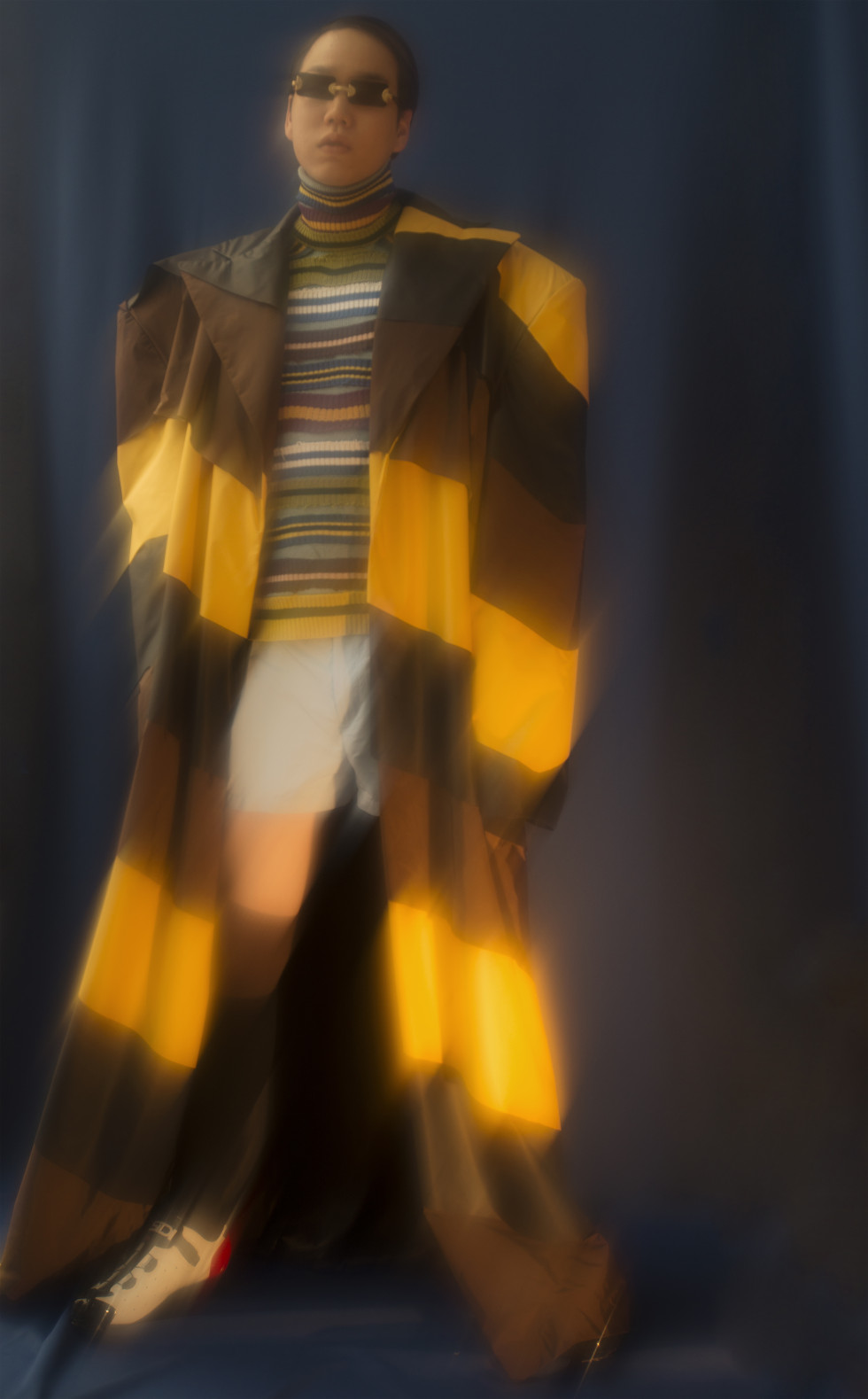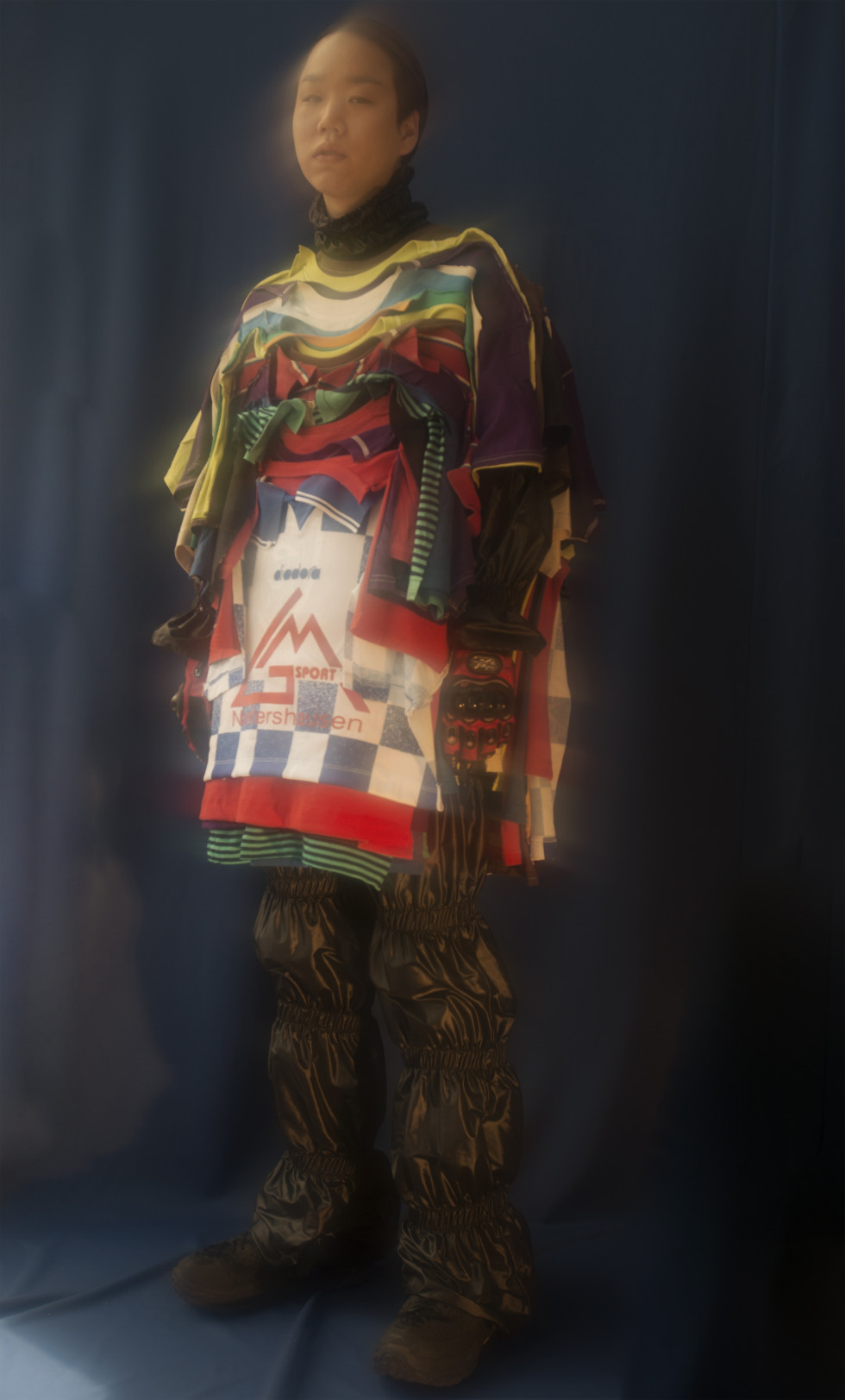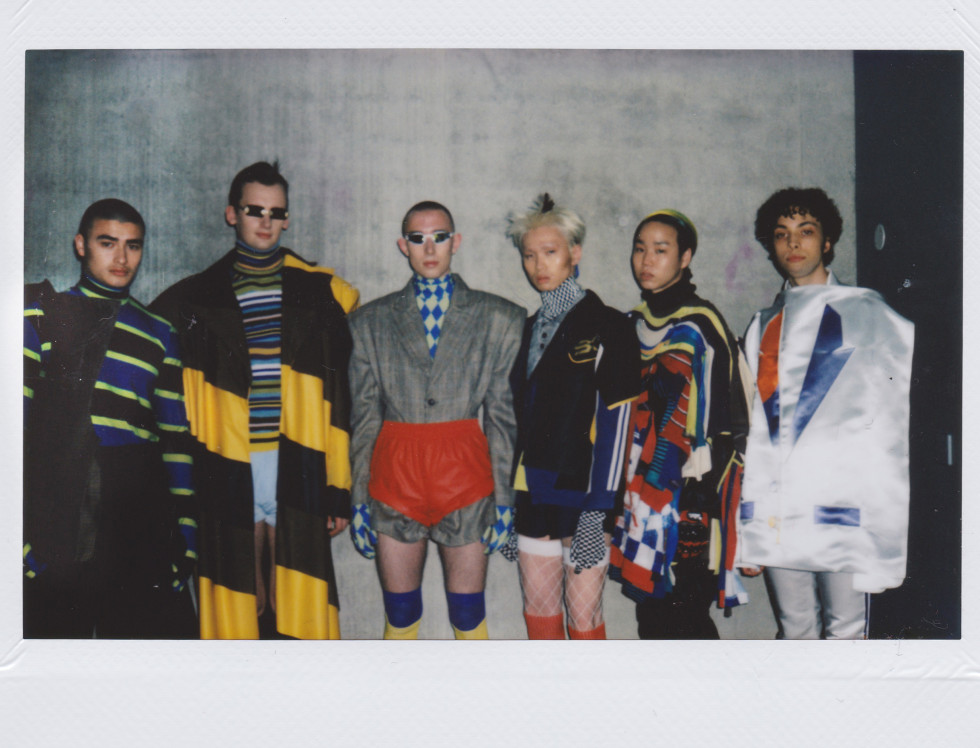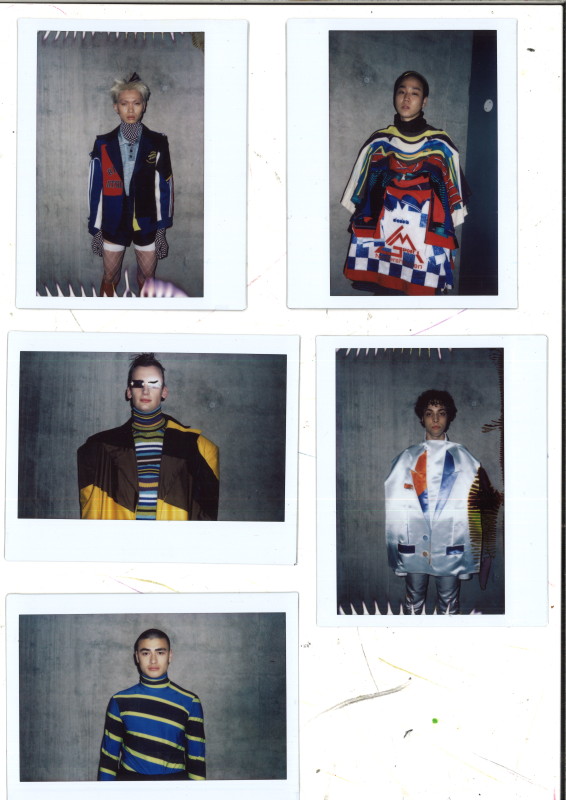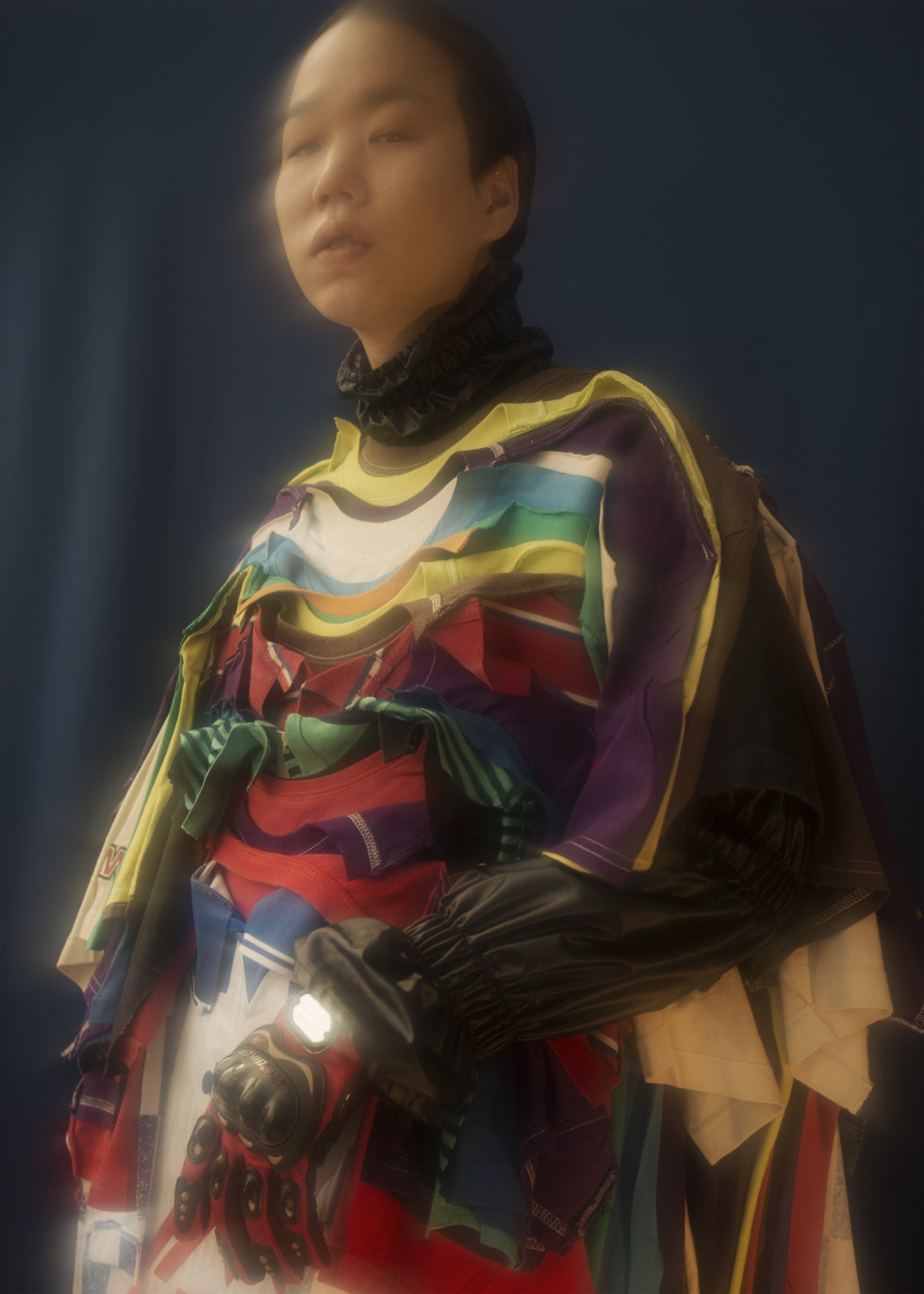I had an interview with Shukrie Joel about how he combines workwear with Middle Eastern robes for his label i & i.
Share a bit about your relationship with fashion and how it has evolved?
I grew up in my father’s tailoring workshop in Port Elizabeth. It bordered many factories and most days workers would be sitting outside our house during their lunch breaks. I was always fascinated by their overalls and clothing. These guys were just hanging out on our lawn dressed in their workwear but come Friday it was like a fashion parade when they knocked off looking sharp as ever. It goes without saying that my father, Ismail Joel was also their go to tailor. The contrast and transformation was so refreshing and as a kid I wondered if those were the same people I saw daily. This aesthetic is still prevalent in my work with a few additional influences.
I tend to gravitate towards workwear, vintage military, Islamic / middle eastern robes and combine these influences with tailoring and old methods of shirt construction. I’m trying to source and manufacture locally to an international standard to show the consumer that this can be done without needing to go offshore. We still have some amazing makers in South Africa that are not being utilized to their full capabilities.
Where did the journey for i & i begin and how has it grown?
The label came about from a frustration that I’m always working on my own and not finding collaborators to exchange concept with. I worked alone most of the time focusing on bespoke. It was the only method I was accustomed to working with my father and also due to some bad business decisions in the past. In time I found that when you put out a body of work that it will attract the right people. i & i is not about the individual, a me or a you. Instead it represents what we can achieve when we build in a positive direction as a collective. The irony is that I’m still running a one man show but at least I’m surrounded by great individuals at the shared studio space above Corner Store.

What is your approach to how you conceptualize and construct your garments?
I must admit it is a strange process as I don’t sketch anymore. I used to sketch years back but in a 2 dimensional manner resembling the pattern more than the concept. These days I visualize the garment that I intend to make then I obsess over it for days, sometimes weeks, constructing the pattern and exact details from cut, stitch, pocket position in my head until it’s complete and only then do I approach the actual product. With most pieces that I design I try to break the design down to its most basic form as a child or someone with no design background would. I want people to think ‘damn! That’s so easy why didn’t I think about it?’ That to me is the best form of design no matter what the discipline is.
From your Instagram it appear as if you work between South Africa and Canada. How does this feed into your creative work?
I’m really blessed to spend a good amount of time between the two countries annually. When I’m in Montreal, Canada, I work on the i & i project, as well as working as a buying consultant for a boutique called Les Etoffe (which is also my stockist in Canada and run by my friends Chris and Diana). We travel to NYC over the fashion calendar and visit some of the best showrooms in the city thus giving me a good understanding of what buyers are interested in as well as what doesn’t get their attention. I then use this as my departure point and manufacture a range in fabrications that balances the design and price point.

What was the inspiration for your latest collection? Could you please share the thinking behind the shoot? What mood/energy were you trying to bring across?
There was no real inspiration for the collection as such. Over the years I’ve made so many patterns that I’ve never put into production and each year I review them and see how I can interpret them in new fabric. I focus on what works for me and in turn that familiarizes the consumer with the product. Regarding the shoot, every year so many publications come to Cape Town to shoot their editorials and catalogues and spend millions doing so. I mentioned to Anees Petersen why not use this as our direction as we are not paying a single cent as we have all this nature on our doorstep and readily available. Why should we be the ones trying to do an urban shoot when our scenic landscape is so accessible? We wanted to use what we have and see how the garments respond to this beautiful canvas as a backdrop. Together we did the creative direction and found Qiniso Van Damme who has a great silhouette and everything just felt right on her. I wanted to have a Vato / Latino feel to it as it worked nicely with her look. We had Seraaj Semaar do the onset styling as well as Marge Linderoth with hair and make up. The team worked well together and I’m proud of our efforts and the results, especially Anees as he is not a trained photographer and he was shooting on film only, so double challenges as he also did the location scouting. The guy is a one man powerhouse! In essence the shoot also captures the unity that we have as a team working at Corner Store. We are 5 brands housed in one store with the studio upstairs and we all share and strengthen one another on a daily basis. It’s something really beautiful and unique and I’m happy to be working with such amazing people when I’m back home in South Africa.
Do you have specific fabrics you enjoy working with?
Currently most of the collection is made in hemp twill and single jersey. With the i & i project I’m using natural, sustainable fabrics as this resonates best with the brand. I then divide it into articles of colour ways depending on how accessible the fabrics are in my vicinity. Natural fabrics work best for what I’m doing but I don’t like to restrict myself to a certain type of fabric. If it feels good and works for the design then I’ll use it.
Who do you imagine as the person who would wear your garments?
I use to have a set image of my consumer but since the release of the label I was pleasantly surprised that this was not the case. In the past I’d look at an individual and think ‘you’ll get it’ but then I’ll be disappointed when they don’t, so I try not to focus on that aspect too much. A number of women have been buying into the brand and prefer the men’s cut as opposed to it being more tailored to the female form. Most of my work starts of as a unisex concept but I leave it to the individual to choose without restrictions.

Is there anything that you are working on at the moment that you would like to share with our readers?
I’m expanding the line with more denim pieces, sweats in 3M and prints by Bradley Abrahams and Taariq Latiff, as well as soft tailored pieces in hemp / linen for summer and a small range of kids clothing. There’s also a leather project that I’m working on with Research Unit.
Anything else you would like to mention about yourself or your label?
Nothing that I haven’t touched on above but maybe one gripe. Retailers should stop with a consignment strategy and focus on empowering local design. It’s a difficult industry with brands taking risks and paying production costs while some stores are fully stocked with consignment goods on a sale or return policy. With most makers I have to put down a deposit as I want to ensure they can pay their staff but in turn I’m not being paid a deposit when a retailer places an order. Rather pay a deposit and strengthen the chain of supply. The retail industry in SA needs to find a better manner of doing business with their stockists if they want to survive as a brick and mortar in a digital age. That being said nothing beats a tactile experience especially when it comes to clothing.



Credits:
Creative direction: Shukrie Joel & Anees Petersen
Photography: Anees Petersen
Model: Qiniso Van Damme
Styling: Seraaj Semaar
Make up and hair: Marge Linderoth
